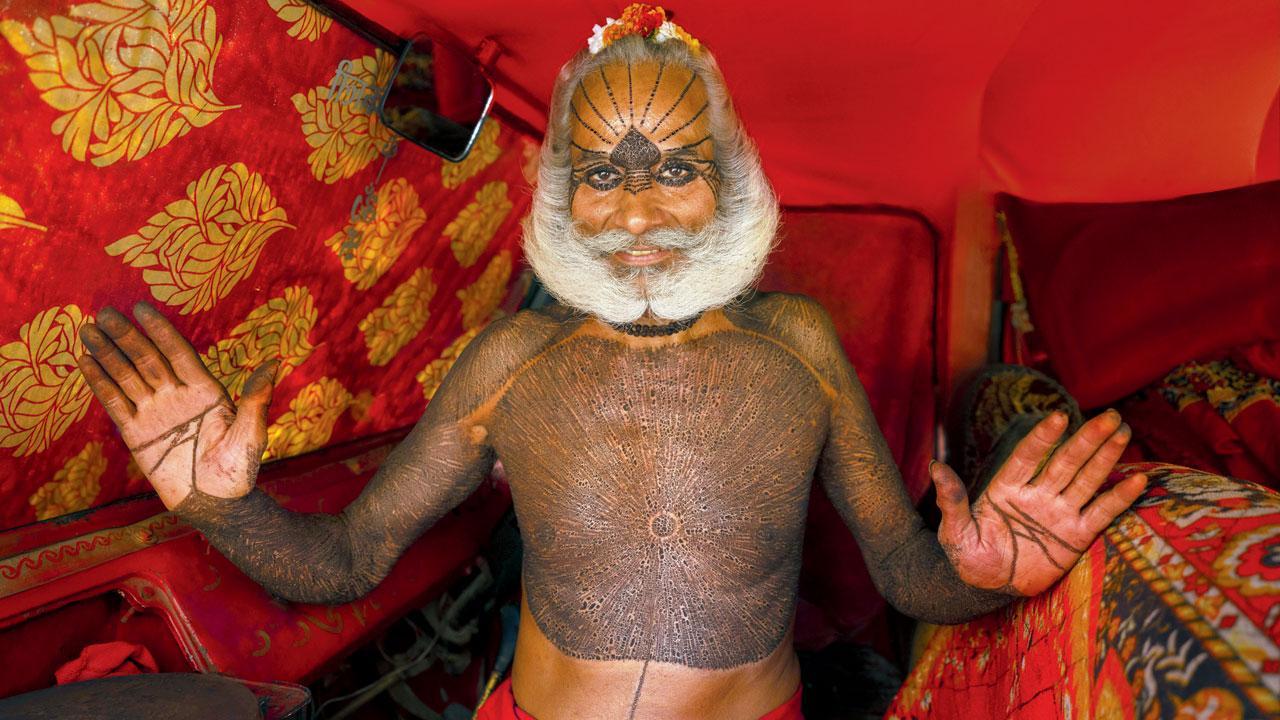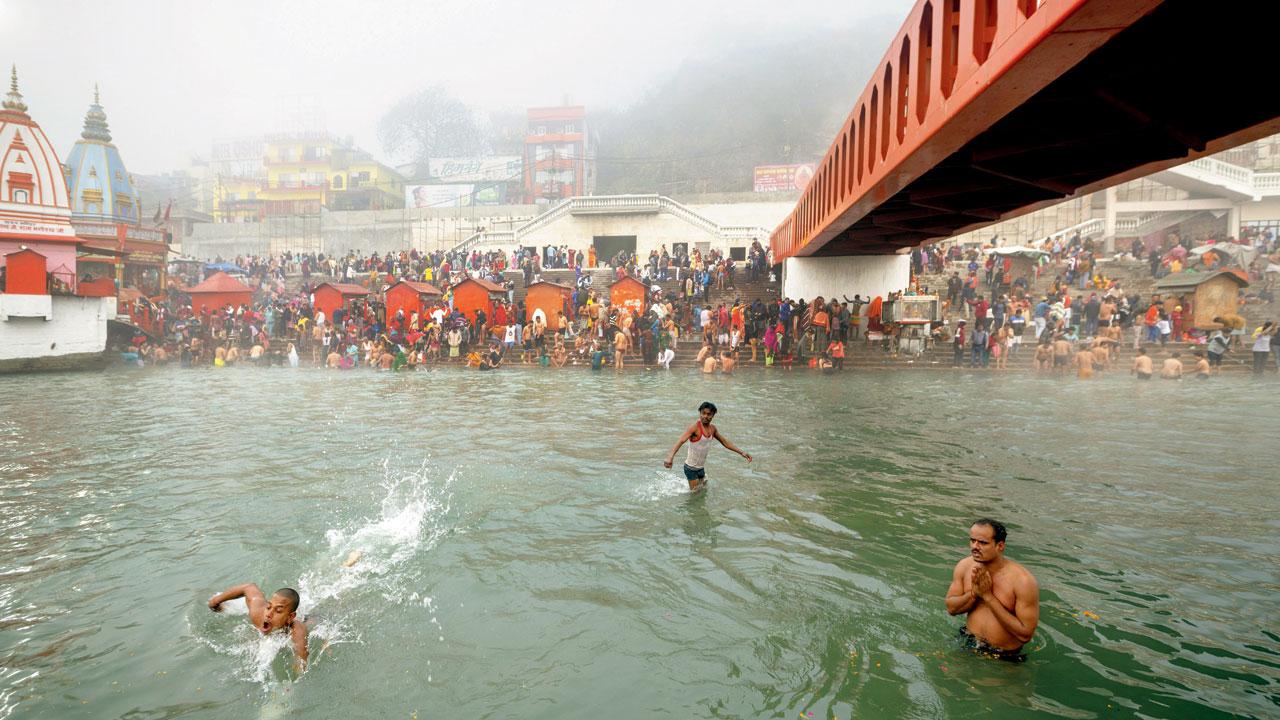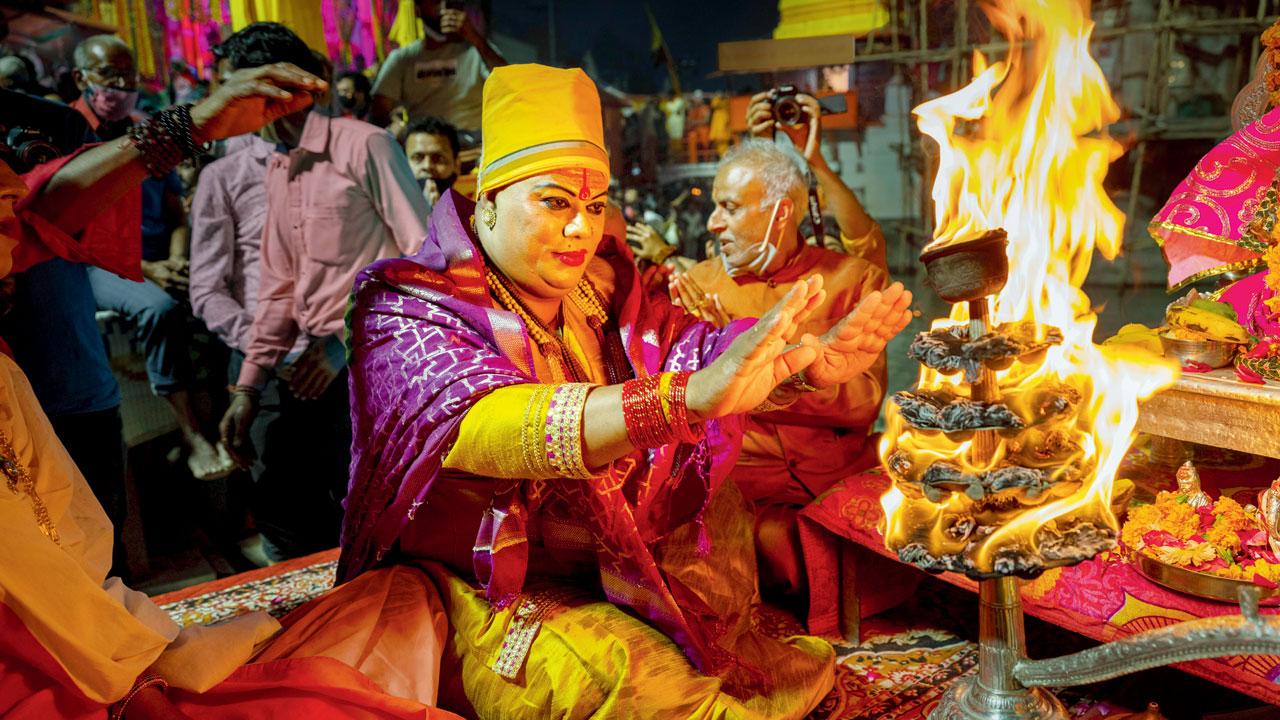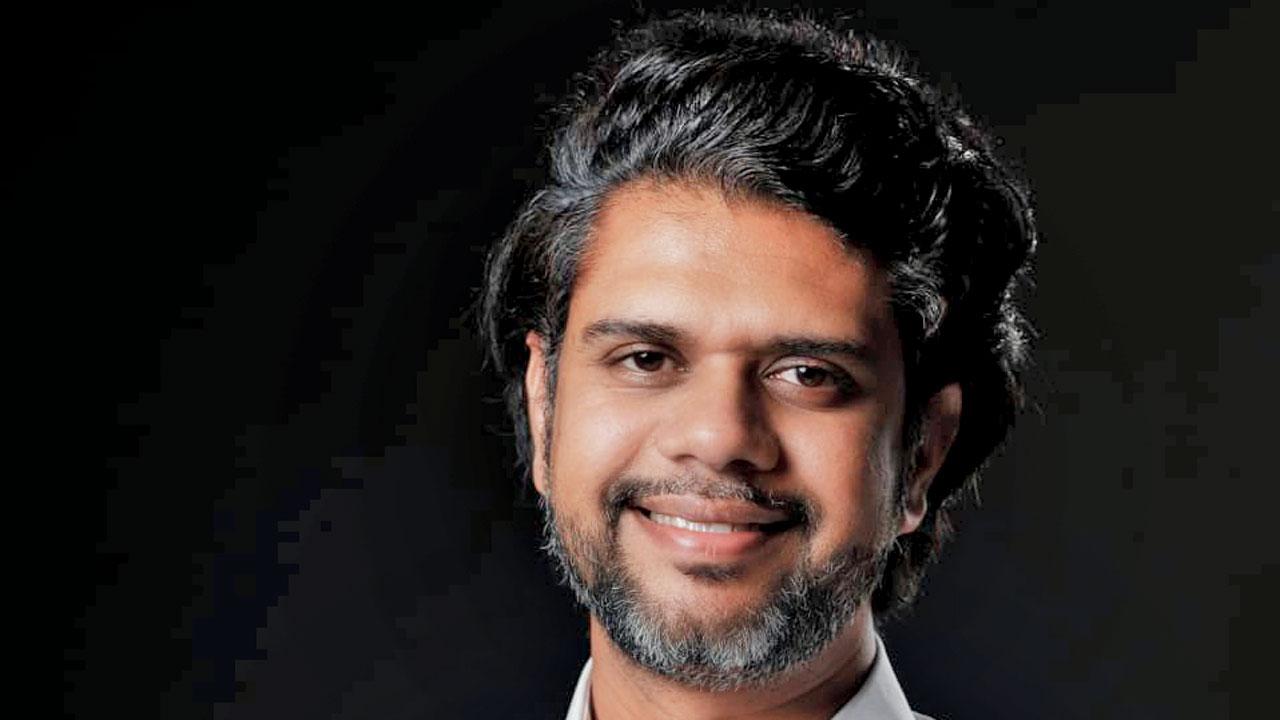The author and photographer of a new coffee table book wants to tell people that the mela goes beyond the Naga sadhus, and why they must keep the sadhana alive

Rakt Chandan Baba with a temporary tattoo of a glowing sun drawn on his upper body using red sandalwood. He travels across the country in his car-cum-chariot to promote the glory of Maa Kali
I always felt that people only perceive Kumbh as the mela to see naked sadhus. As an anthropologist, I wanted to tell them there is so much more,” says photographer Rajesh Satankar, and co-founder of Knotting Bells, who has come out with a photo-heavy coffee table book called Kumbh Haridwar. To tell the untold story, Satankar travelled to the Kumbh Mela in Haridwar in 2021, and took three years to write the book. He prides himself on the fact that his documentation of the sacred fair is “neutral and not religious. It’s about people”.
ADVERTISEMENT
 Devotees take a dip in the Ganga. “Before every Kumbh, a budget is allotted to it. Mega infrastructure projects are taken up, bridges are built and accommodation is constructed. They often just build a new city.”
Devotees take a dip in the Ganga. “Before every Kumbh, a budget is allotted to it. Mega infrastructure projects are taken up, bridges are built and accommodation is constructed. They often just build a new city.”
Satankar spent 35 days in Kumbh with a team of five. “The problem with street photography is that you shoot as an intruder and leave. I didn’t want to do that. I shot on a 50 mm camera, for which you have to be close to your subject. There has to be silent consent. We shot almost 300 people in those 35 days.”
 Pavitra Maa is the Modeleshwar (superior of the province) from Kinnar Akhara, who attended the Ganga aarti as chief guest on the day Satankar shot her. “In the times we live in, where the LGBTQ cause is very much alive, the Kinnar Akhara holds a very special place.”
Pavitra Maa is the Modeleshwar (superior of the province) from Kinnar Akhara, who attended the Ganga aarti as chief guest on the day Satankar shot her. “In the times we live in, where the LGBTQ cause is very much alive, the Kinnar Akhara holds a very special place.”
Satankar is in awe of many people he met—like a baba who does the Panchagni Sadhana (a sadhana founded by Parvati). He sits on the riverbed, encircled by pots of fire, with one resting on his head. “It’s a 21-day sadhana to raise the temperature of the body,” Satankar tells us. Another baba to arrest Satankar’s attention was Rakt Chandan Baba who sits by the river Narmada daily, and makes designs on his body using red sandalwood. For Satankar, the main aim was to “celebrate our heritage and pass on the message so that the new generation stays connected to this concept. There were almost two crore Indians passing through and everyone had such a nice vibe, that feeling of sadhana is infused is so infused in us that everything just goes off smoothly. I wish we can all imbibe that.”
 Rajesh Satankar
Rajesh Satankar
 Subscribe today by clicking the link and stay updated with the latest news!" Click here!
Subscribe today by clicking the link and stay updated with the latest news!" Click here!







